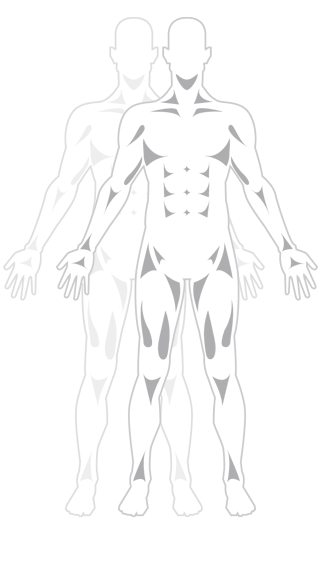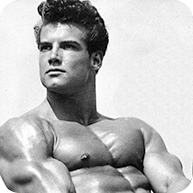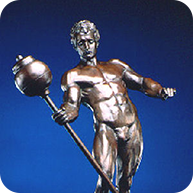Maximum Muscular Potential Calculator
Compare yourself to the fitness ideals of bodybuilders and Olympians!
Calculate your Body Fat, Lean Body Mass, Fat Free Mass and determine your true Potential.
For the Muscular Potential we require several of your measurements with the Wrist and Ankle being the most important ones.

Lean Body Mass Potential
Various industry experts have created detailed formulas by reviewing natural body builders to try to come up with mechanisms to predict an individual's potential.
- Casey Butt, Ph.D. - most accurate predictative model for lean body mass and muscular potential
- Martin Berkhan - accurate and easy to calculate formula for lean body mass
- Fat Free Mass Index Boundary - using the upper natural limits (aka no juice) of FFMI
- Marc Perry - another easy to calculate target and the majority of the time considered the lower limit
With the above, providing a solid understanding of what your potential Lean Body Mass ranges can be, we want to dial in on what this means for you in regards to timing, ie, how long is it going to take you to reach those limits? This is accomplished using our Years Of Training forecast models aka "How Long For Ze Gainz".
This is done via another interesting formula done by Casey Butt in combination with his research to better understand how long it will take you to reach your maximum potential.


Muscular Potential
Casey Butt, Ph.D. created several equations that predict muscular measurements in lean condition of approximately 8% to 10% body fat. Height, ankle, and wrist circumference are the determining factors.
He further isolates formulas for muscular potential based on being a Hardgainer or an Easygainer. In it's most basic definition a "hardgainer" is simply someone who gains muscle more slowly and with more difficulty than the average trainee. For the purpose of identification of being a hard gainer or not, casey looks closely at a specific ratio of your height in comparison to either wrist or ankle to determine possible growth for your upper and lower body.

Steve Revee
Steve Revees inspired thousands worldwide - first as an internationally titled bodybuilder, later as a proponent of Health and Fitness.
The physique of 1940s-1950s bodybuilding legend Steve Reeves will go down in history as being one of the most perfectly proportioned of all time. Many feel his body represents what a bodybuilding physique should look like - flawless and beautiful.

Greek Ideals
Based on greek statues and ratios for the original Mr. Olympia. It considers your only measurement of Wrist to calculate your base Greek ratio, your ideal chest. All other comparisons and ratios are based of your calculated chest measurement.
In reality, the equations were based on 1950's and early 1960's Mr. America contestants and were written by a Canadian in 1964, with no reference to ancient Greece whatsoever. Ancient Greek sculpture body proportions were, in fact, much smaller everywhere but the waist. Also found in Stuart McRobert's books Brawn and Beyond Brawn.
Bicep Analysis
Everyone loves Big Biceps - now what does it take to get there and how do I realistically analyse where I am today?
First we analyse your current Flexed bicep measures against the various model and of course normalizing your measure against your body fat values - lets face it fat is not muscle - this will give you an idea of how big your arms really are when comparing to your body fat levels.
The final aspect of your arm analysis is focused on understanding increase and decrease in your big ole' arms.
Bicep Volume Analysis
Improving your Flexed Bicep size comes with quite a few challenges that have to be understood to be realistic about progress.
Natural Limits & Progress: As you are increasing the size of your bicep, you are at the same time also getting closer to natural limits - this will slow down progress as you are trying to increase.
Circumference vs Area: The next is understanding the increase in circumference and area that is being occupied. For example, when you add 1" to your 15" arms, you are adding 6.67% in circumference, however, the area required to increase is 13.78% - quite a bit more. As you are adding additional inches to your arm, the area increase will be larger in comparison - so getting bigger arms will become more and more difficult.
How much muscle can you gain naturally?
Using a variety of models, we can estimate your potential Lean body mass example. The most accurate estimates including measurements of your wrist and ankle and provide you good estimates for both Lean Body Mass Potential but also for individual measurements of muscle size at specific locations.
Click here to calculate yours.
Is there a genetic limit to muscle growth?
You may have heard the term Hardgainer or Easygainer as an indication of whether or not someone may have genetic limitations (or is more genetically included to gain muscle). While there are many reasons, one aspect to include is your skeletal structure that may provide you some guidance on your potential limits. We include a variety of options to better guide you .
Click here to calculate yours.
